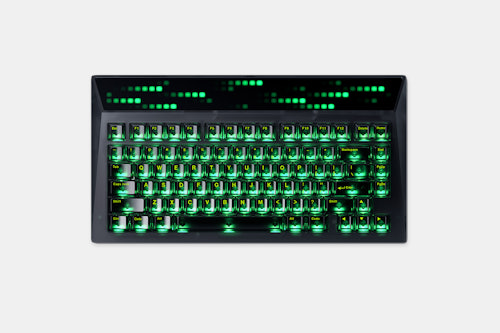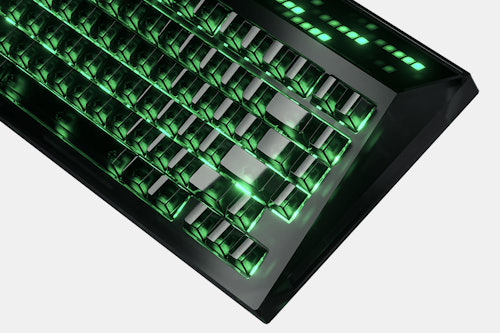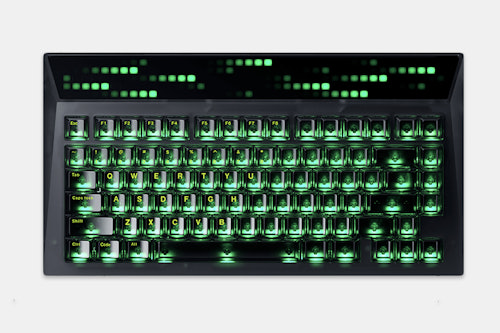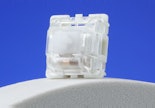Click to view our Accessibility Statement or contact us with accessibility-related questions

 VIEW 2 MORE
VIEW 2 MORE VIEW 1 MORE
VIEW 1 MORE
Angry Miao Cyberboard Terminal Mechanical Keyboard
$600
Angry Miao Cyberboard Terminal Mechanical Keyboard
bookmark_border
$600
Ready to Ship
●
Members who purchase earn
600
Drop Rewards
Frequently bought together:
Want to know something about this product or how to use it?
Ask the community!
Ask the community!
Sort by: Newest
keyboard_arrow_downCommonmind
90
Feb 13, 2023
It depends on how you define value. Long time keyboard enthusiasts will pay a premium for well-designed boards that are equipped with features non-enthusiasts may have difficulty appreciating, or actually recognizing are there. For example, an enthusiast might be able to easily tell the board they're typing on was built using specific types of foam, is using a specific type of mounting system, has lubed switches and stabilizers; they may have very specific tastes on the flexibility (or rigidity) of the typing experience, the feel of the keys, and the sound. The latter tends to be a major factor for most hobbyists. There's a lot of nuance there; for instance, I specifically prefer 75% layouts built with tactile switches, using SA or MT3 profile keycaps made from PBT. I prefer my boards to be rigid (no flex cuts) and like the sound to be marbly and rounded, not sharp or clicky.
Getting back to the point, $810 is expensive for Drop, but considering the entire hobby, it is par for the course. On the aftermarket, boards made by brands like KeyCult can sell for thousands. I'm a moderator on r/mechmarket and I can tell you from experience that there are some very deep pockets in the hobby. My own "end game" build was north of $2500 when all was said and done. To be clear, I also make a very good living by typing most of the day, and I think many hobbyists have similar stories. For me, that expense is worthwhile as it reduces pain and makes my time at the keyboard more enjoyable.
To be fair, this is the nature of any hobby; it may be difficult for newcomers to recognize the value, and that's totally understandable. I often don't understand why some people tune their cars, or buy high-end furniture from Restoration Hardware. I think the takeaway here is, if they enjoy it, and they value it, the price is worthwhile to them. And for others, it may make their lives (and their jobs) easier. If you're making $150k a year as a developer, and the primary method for writing code is typing for 12-14 hours a day, a $810 keyboard may seem like a no-brainer (in the same way a touring musician will spend $3500 on PRS that sounds the same as a lower end model, but "feels" better to play for longer periods of time).
To answer @virtualtom; not every pricey board can be broken down into a bulleted list of "here's why this is more expensive." Sometimes it is the materials, the way the board is built, the available customization --including mounting options, colors, accent materials and weights, the kind of layout that's supported, etc. -- and even the designer that created it can impact the price. Again, not every aspect of a price premium can be explained, per se, but as mentioned above, this is consistent with many other hobbies and collectibles.

ThatDudeDeven
0
Feb 13, 2023
virtualtomThat's the exact reason I didn't buy this specific one. I did get the Cyberboard R3 for $500-something and it's not a polycarb board. It's aluminum. This one is plastic. It is very awesome to have, though. And I'm sure the display on this one is a tab better than previous ones. It does not justify the price, then again, hardly anything in his hobby does. It's more of a flex or conversation piece, but at almost a grand, there are other, even secondhand, highly coveted boards you can buy for that money elsewhere.
If you can afford the previous version, even Le Smoke, of a cyberboard, they're worth it if you have a flair for blinky lights. They are solid boards.
karceo94
32
Keyboard Club Member
Feb 13, 2023
realized this is specifically the Terminal version, answered myself lol

dawn_wall
0
Feb 13, 2023
Can you change the lighting of the LED panel on the board?
Also, what software does this keyboard use to manage the per-key lighting?
monkiebacon
13
Feb 14, 2023
Nope. Just the layout shown. Source: I purchased the original run of the Cyberboard terminal




.jpg?auto=format&fm=jpg&fit=clamp&w=155&h=108&dpr=1&q=70)




